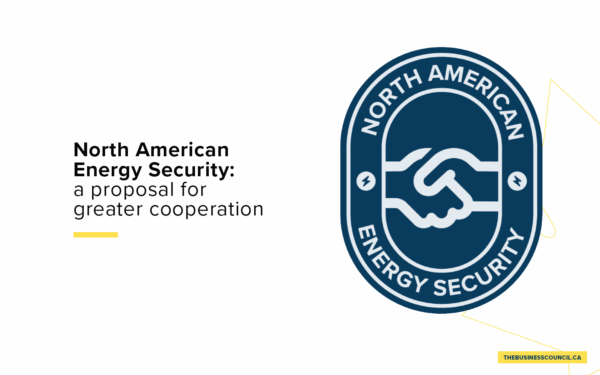A New North Star III
The Case for a Canada Advanced Research Projects Agency
Canada’s prosperity has relied too heavily on the here and now of deficit spending, booming real estate and debt-financed household consumption. We must instead redirect investment to the wealth and well-being of the future, particularly our ability to invent and innovate, generate world-leading technologies and firms and ultimately capture global markets. The invention and adoption of new products, services and processes must be the foundation of rising productivity and long-term prosperity.
The idea that the process of invention and innovation is a key ingredient for national wealth and prosperity is neither new nor novel. As U.S. President Harry S. Truman put it in his 1949 inaugural address:
“Greater production is the key to prosperity and peace. And the key to greater production is a wider and more vigorous application of modern scientific and technical knowledge.”
Canada’s performance on the application of modern science and technology – sometimes characterized as the “innovation continuum” – requires greater policy attention. Building a modern economy that lifts up Canada and Canadians will depend on the ability of domestic firms to create new products and services that are competitive in the global economy. Invention and innovation must therefore be major inputs into this positive-sum process of greater competitiveness, higher productivity and, ultimately, rising living standards.
The benefits of new ideas and technologies are not just limited to material gains. They are also key drivers of solutions to environmental, national security and social challenges, ranging from climate change to public health to the digital divide. The process of catalyzing breakthrough ideas and technologies and then bridging them across the
innovation process to their market-based application can, for instance, lead to new vaccines for tackling future pandemics, emerging clean technologies for greening the economy, and the application of digital solutions to everything from farming to health care.
As a nation suffused with ambition to matter in the world and run with the best, we need to do better on breakthrough ideas and technologies – more instances like insulin and fewer scrambling for vaccines developed and produced elsewhere. Increasingly the laggards on breakthrough ideas and technologies will be left with the breadcrumbs in an economy fueled by invention, innovation and intangibles.
Yet Canada is not maximizing these potential outcomes for its economy, society or place in the world. The Brookfield Institute for Innovation + Entrepreneurship’s and Innovation Policy Lab’s 2020 Inclusive Innovation Monitor points out, for instance, that “innovation in Canada has been lackluster compared with our international peers.” A 2018 Brookings Institution report similarly showed that our advanced industries – namely, those sectors with high-value innovation and technology application that disproportionately drive national and regional prosperity – lag significantly compared with the United States.
Diagnosing the problem is the easy part. We are not producing enough breakthrough inventions and failing to effectively transition the ones that the country does produce through the innovation process to commercialization, scale and, ultimately, global export. Canada is stuck in what has been described as a “low-innovation equilibrium.”
Solving these shortcomings is much more challenging. They are rooted in the structure of the economy, the design and implementation of many layers of government programs and policies, and the culture of incrementalism that tends to permeate Canadian business, universities and governments. It is difficult to overcome this combination of secular and structural factors that influence the pursuit of science, technology and progress.
Yet there is a renewed urgency today to address Canada’s innovation underperformance. The global race for invention and innovation is gathering speed in the new world of the intangibles economy. As we have outlined in our previous New North Star papers, the rise of intangible assets (including data, software and intellectual property), and their “winner-take-all” dynamic, is transforming where economic value is derived and which countries will shape the future. Governments around the world are in turn enacting ambitious new strategies to boost science and technology in general and pursue breakthrough ideas and technologies in particular.
This point cannot be overemphasized: we are living in an era of paradigmatic change where a combination of the intangibles economy and growing geopolitical rivalry is requiring policymakers to rethink their basic policy strategies to support domestic invention and innovation. The growth of “dual-purpose” technologies that combine commercial and national security applications has contributed to what U.S. scholar Michael Lind has characterized as the “return of geoeconomics.”8 A capacity for innovation is no longer merely a prerequisite for rising living standards. It is a fundamental strategic advantage for dealing with various environmental, national security and social challenges.
This shift has led governments and politicians across the ideological spectrum to adjust their thinking on the strategic importance of domestic capacity in key sectors and technologies, the role of government in supporting invention and innovation, and the need for new public-private institutions to support progress in these areas. As Canadian-born, Washington-based innovation policy expert Robert Atkinson observed in a July 2021 paper, more than 50 countries have now established some form of a dedicated national technology agency.
U.S. President Joe Biden’s January 2021 letter to his new science advisor is a good example of this renewed commitment to science and technology. The president’s letter is reminiscent of former President Franklin Roosevelt’s instruction to Vannevar Bush in November 1944. That famous instruction led to the highly successful Endless Frontier Agenda, which ultimately contributed to U.S. leadership on science and technology for the subsequent 80 years and counting.
Growing bipartisan support in Washington for greater public investments in science and technology in general, and in applied industrial research in particular, reflects a shared understanding of the modern economic imperative: countries that are able to generate and then fully capitalize (what former President Truman referred to as the “production” and “application”) on their intellectual capital will be the ones that succeed in the 21st-century economy.
Canadian policymakers must therefore think bigger. Our middling innovation performance will not be solved by the creation of one-off programs or policies in this new era of intense global competition. There is a national imperative to strengthen the country’s overall capacity for invention and innovation. Canada must systematically address the structural weaknesses across the innovation continuum from basic research funding to scaling global firms. The country, in short, needs a new capacity to catalyze breakthroughs and bridge them to commercialization, scale and, ultimately, global export.
This ought to start with a recognition that our current models for supporting science and technology are inadequate. We need to augment our incremental approach, which mostly comprises a panoply of innovation policies and programs that have yielded sub-par outcomes, with a new highrisk, high-reward approach. Such a policy shift would have implications across the economy but perhaps nowhere more important than the goal of energy transition. Carbon pricing and other abatement policies should induce growing demand for new and different forms of energy. There is now a need for a greater focus on the technology side of the innovation equation to fulfil this incipient demand and achieve the goal of net-zero emissions by 2050. The main point is that governments have a key role to play in funding and facilitating applied R&D at scale and in the commercialization of the research for market-based application.
As part of its plan to address the country’s innovation challenges, the federal government has put forward a plan to create the Canada Advanced Research Projects Agency (CARPA) to “unleash bold new research ideas, drive technological breakthroughs, protect Canada’s competitive advantage and help Canadian companies grow and create highly skilled jobs.” Although key details remain mostly unknown, the Liberal policy platform specifically cited the Defense Advanced Research Projects Agency (DARPA) in the United States as a model for the new organization.
The proposal has already generated considerable discussion and debate within innovation policy circles. Some have questioned whether a new agency dedicated to pursuing breakthrough ideas and technologies is the right response to the country’s ongoing innovation challenges. Others have warned that Canada may lack the contingent characteristics – including a large-scale public procurement capacity – for a DARPA-like agency to ultimately be successful here. The idea has been characterized as far short of a silver bullet for Canadian innovation policy.
We understand some of these concerns. The design, governance, operational and programmatic details for a new CARPA will matter a great deal. If the government fails to get these basic building blocks right, there is a high probability that the new agency will underdeliver as the source of new breakthroughs or act as a bridge to their market-based application. The risk is, as its critics have noted, that CARPA essentially becomes just another innovation-related granting agency within the pre-existing federal panoply.
We are more optimistic, however, that CARPA can be a useful institutional addition to Canada’s overall innovation ecosystem. A new agency dedicated to high-risk, high-reward projects with the potential to produce breakthroughs can help to continuously replenish Canada’s innovation pipeline with a new supply of promising ideas and technologies. It can tilt in favour of “wild card” innovation while most other government agencies and programs preference “safe bets.” One might think of it therefore as a government agency singularly committed to pursuing the overriding goal of “zero to one” (radical innovation) rather than “1 to n” (incremental innovation) as polarizing yet highly successful Silicon Valley investor Peter Thiel has put it.
But, as various innovation policy experts have rightly observed, this is a necessary yet insufficient condition for achieving more market-based innovation. CARPA will also need to incorporate into its projects and processes a capacity to help such ideas and technologies transition through the innovation process to market commercialization in the form of public procurement, access to private capital, and other public and private means to help these technologies ultimately secure domestic and global customers. CARPA must, in short, play a role in catalyzing breakthroughs and creating bridges for such breakthroughs to reach the market.
The purpose of this paper is to set out an institutional and policy blueprint for the future CARPA. We draw on a combination of primary research (including comparative analysis of peer jurisdictions) and our own policy experience to put forward the design, governance, operational and programmatic elements that we believe are crucial building blocks for CARPA.








